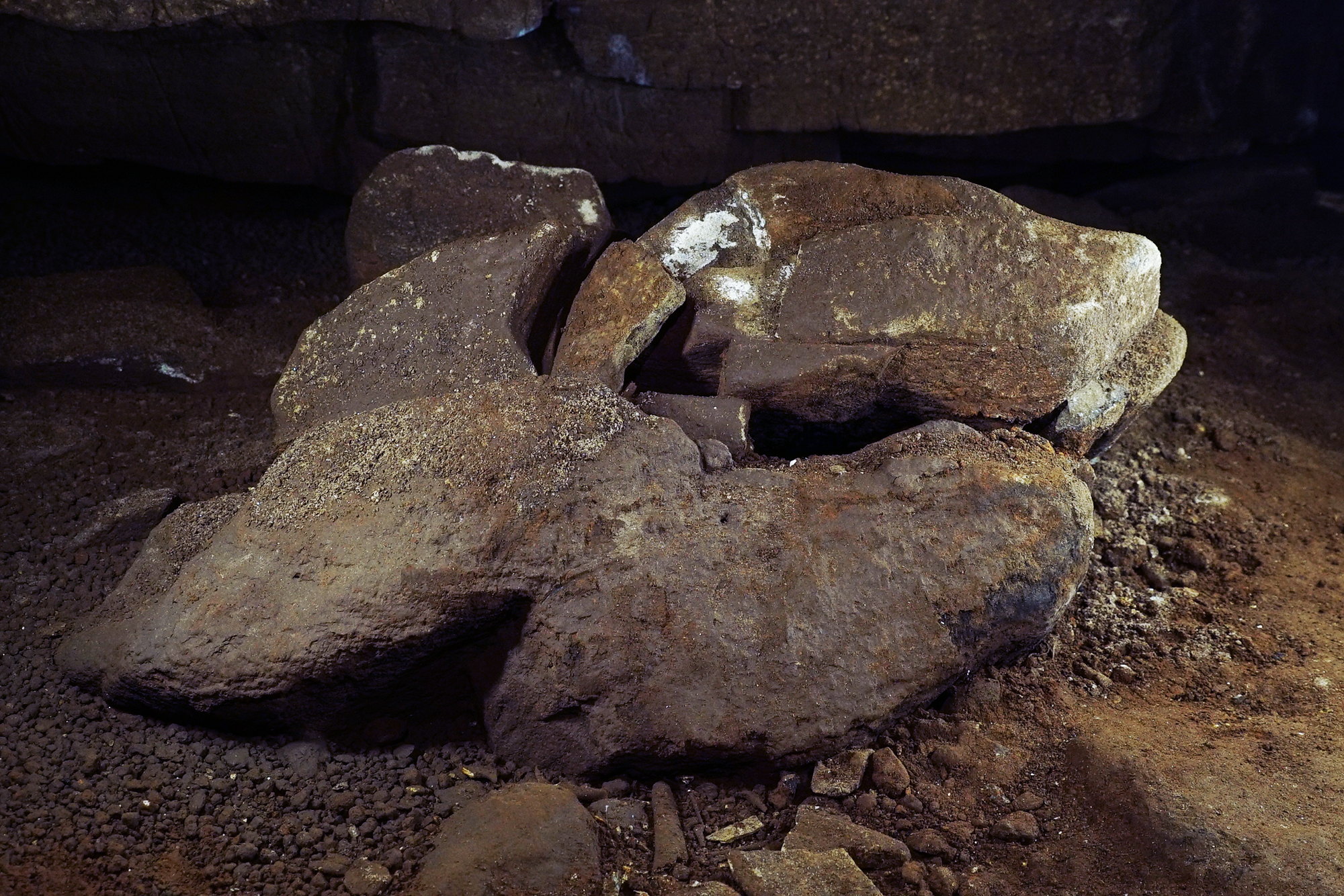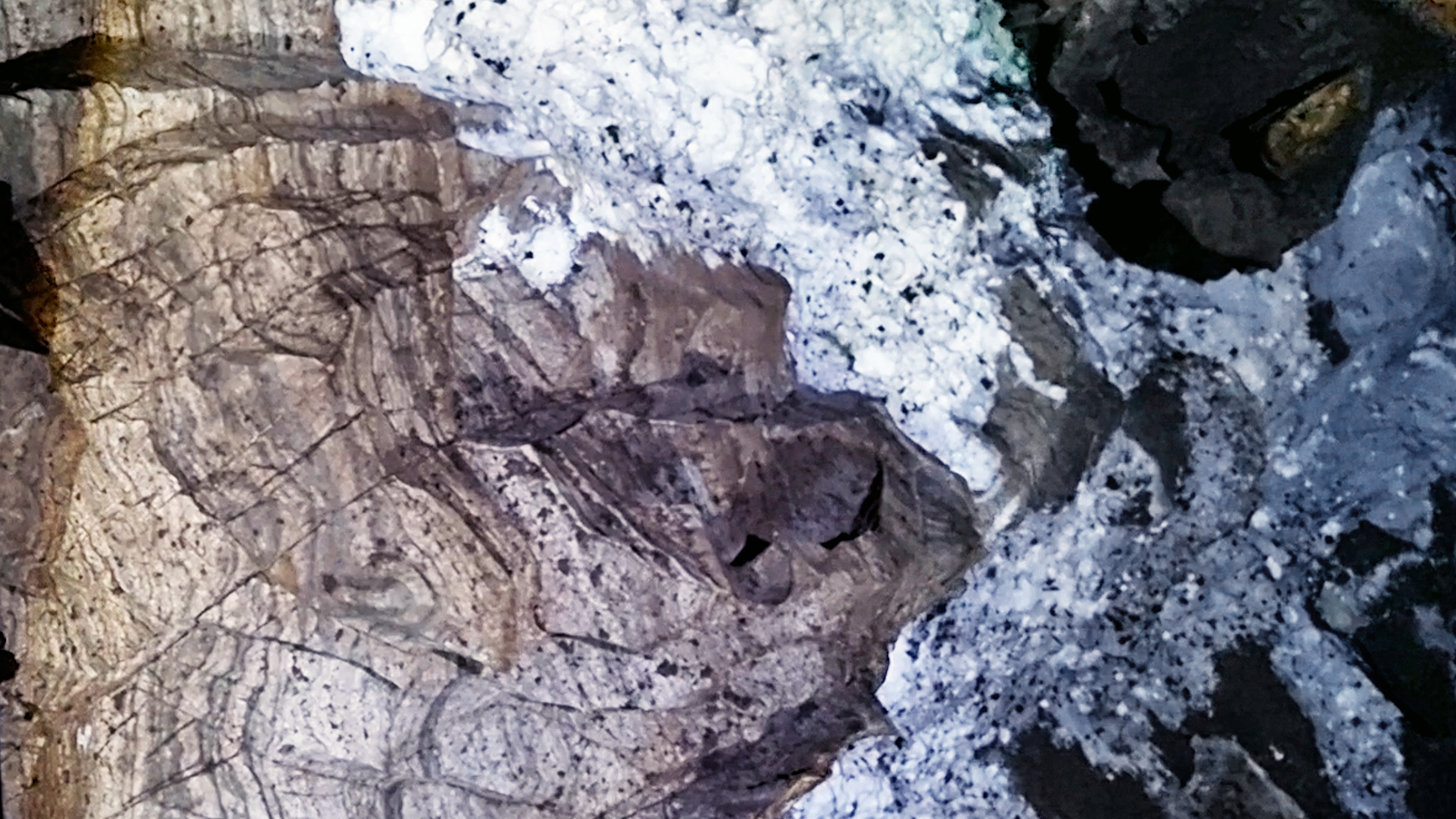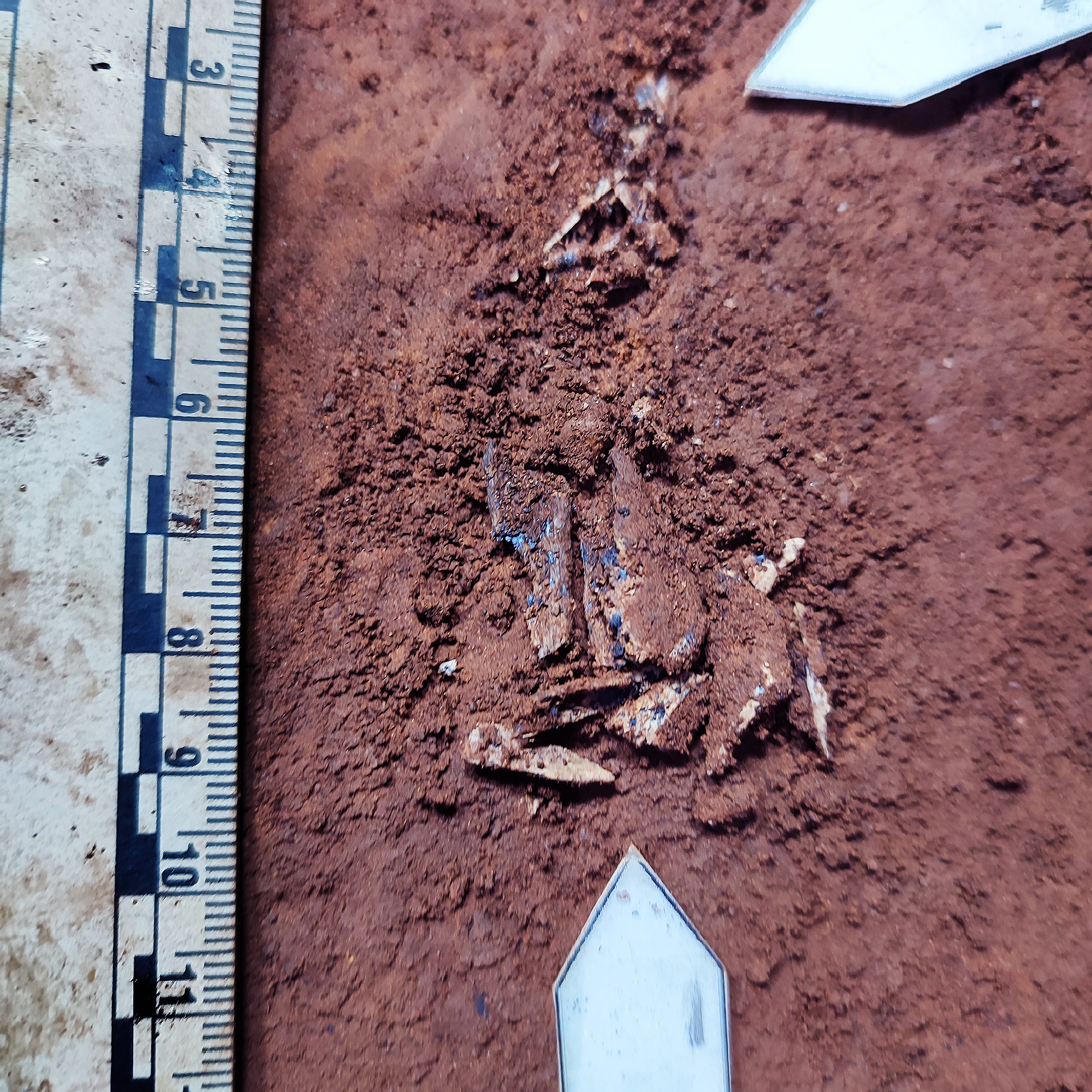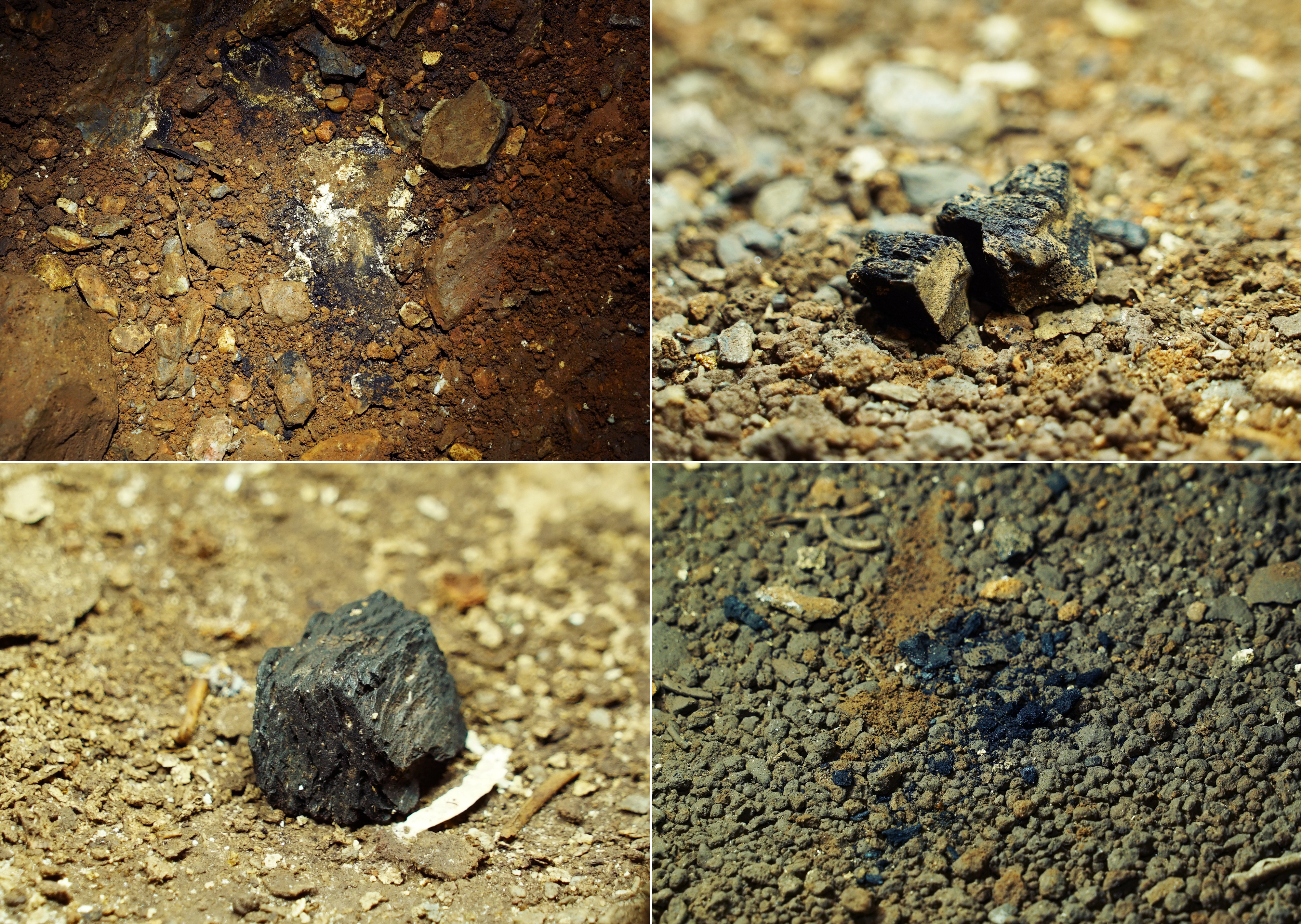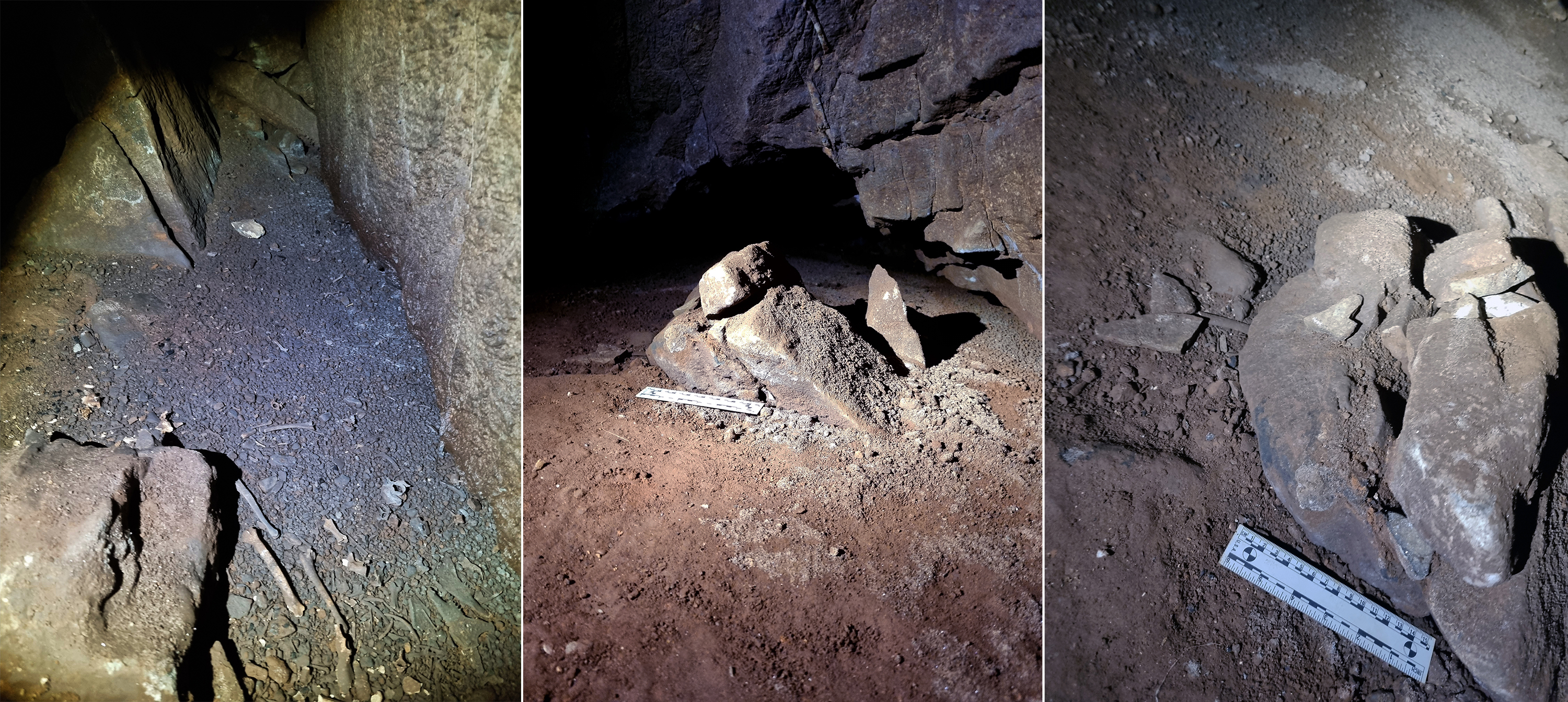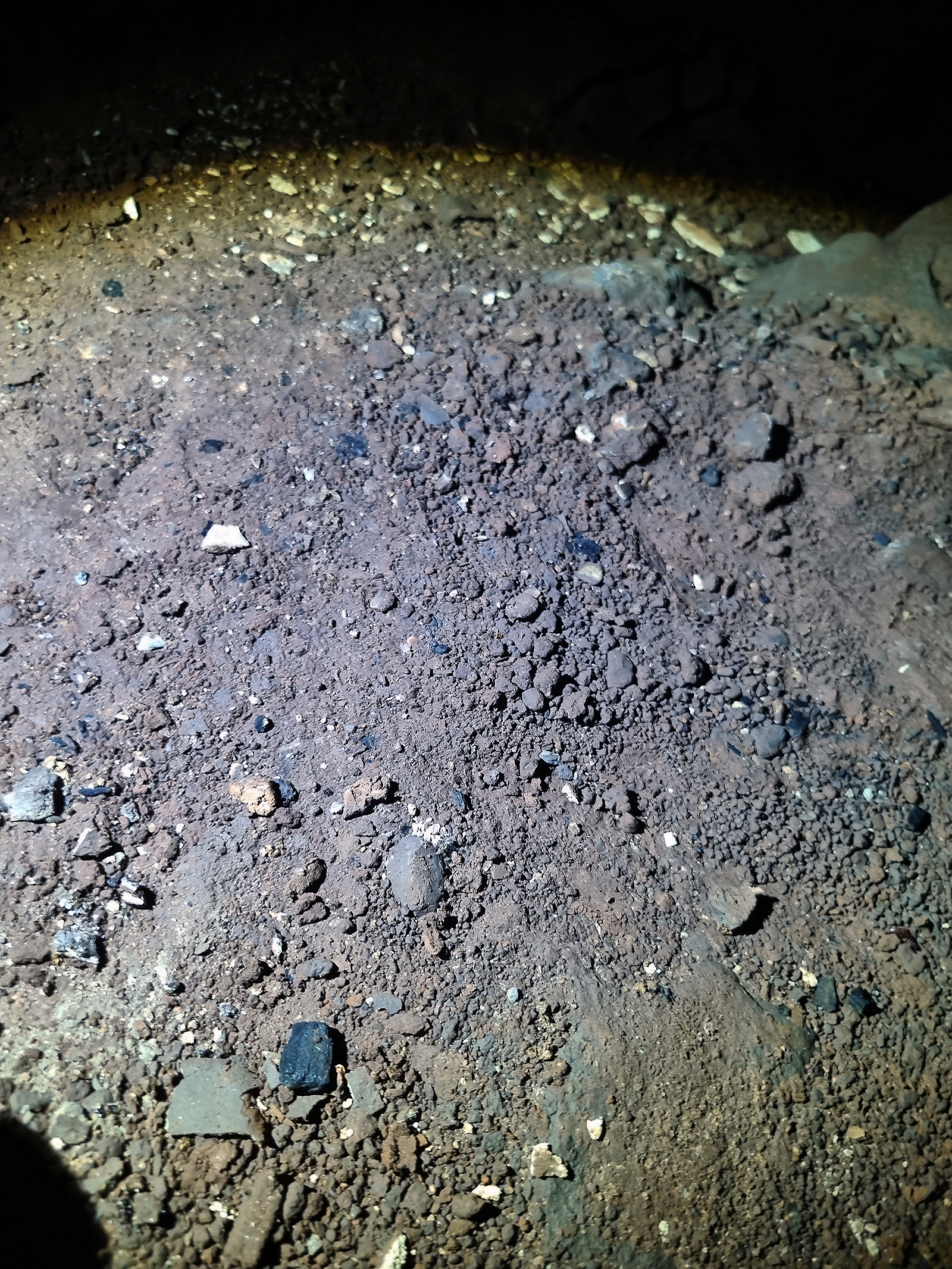
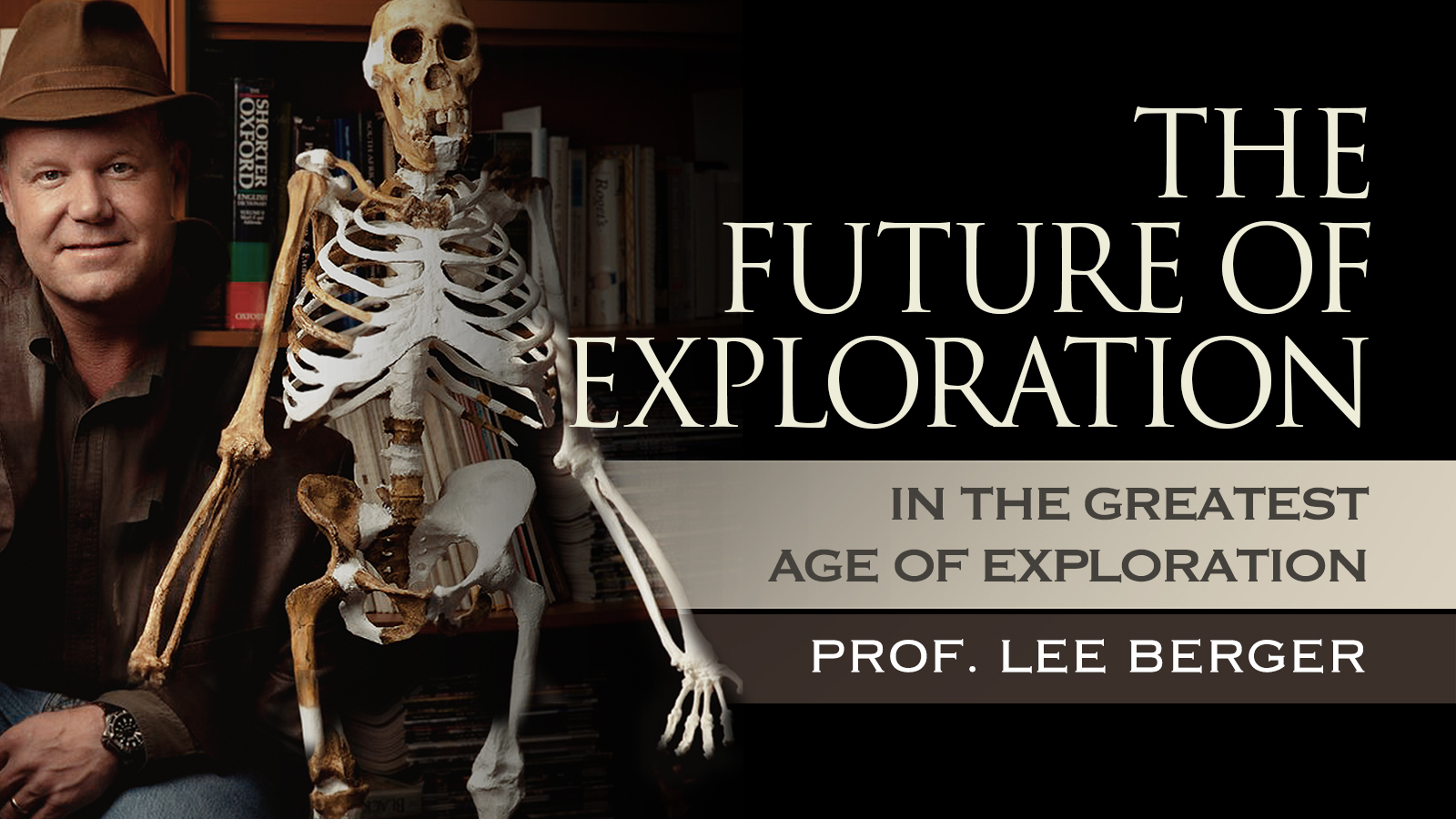
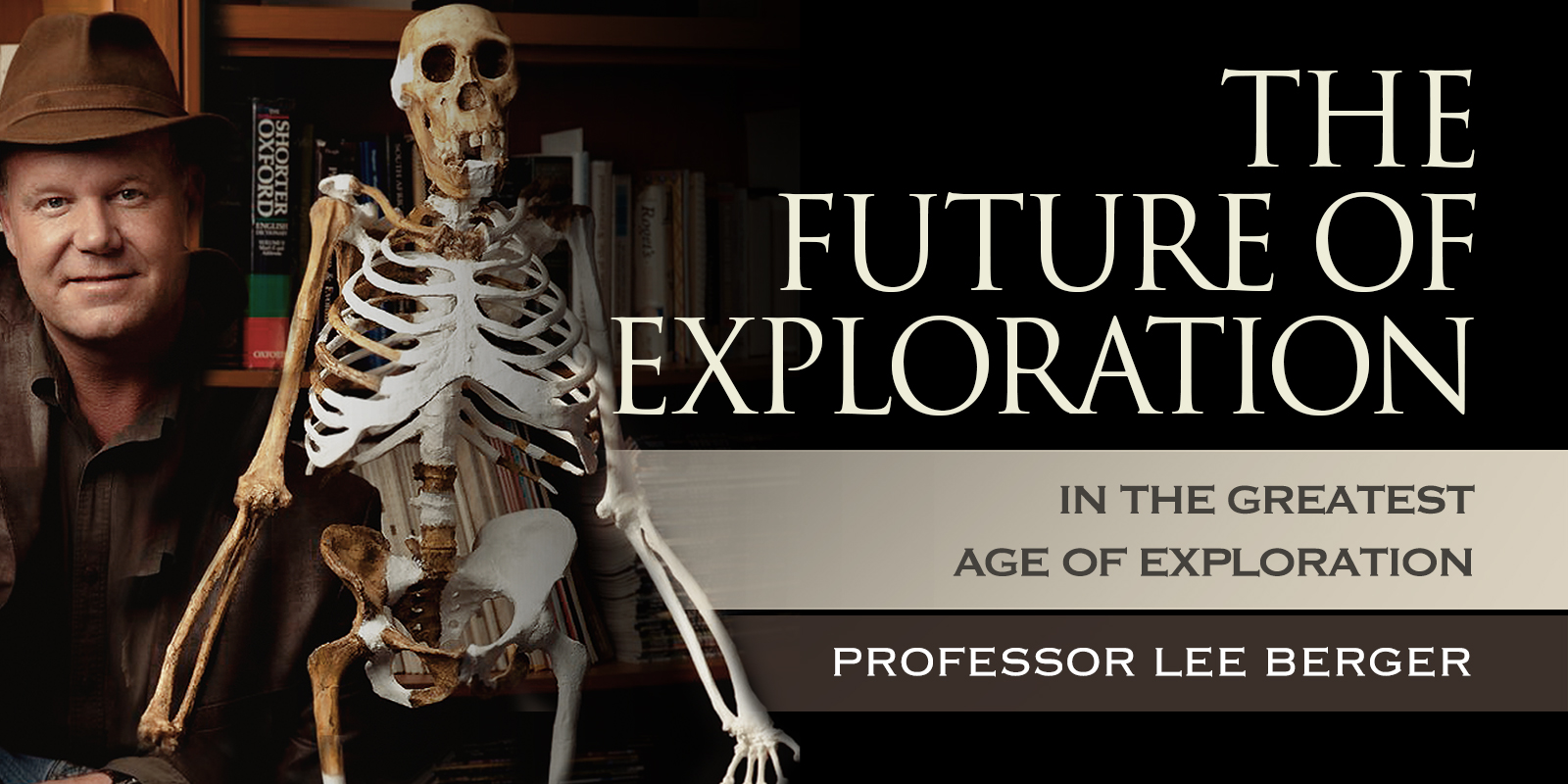
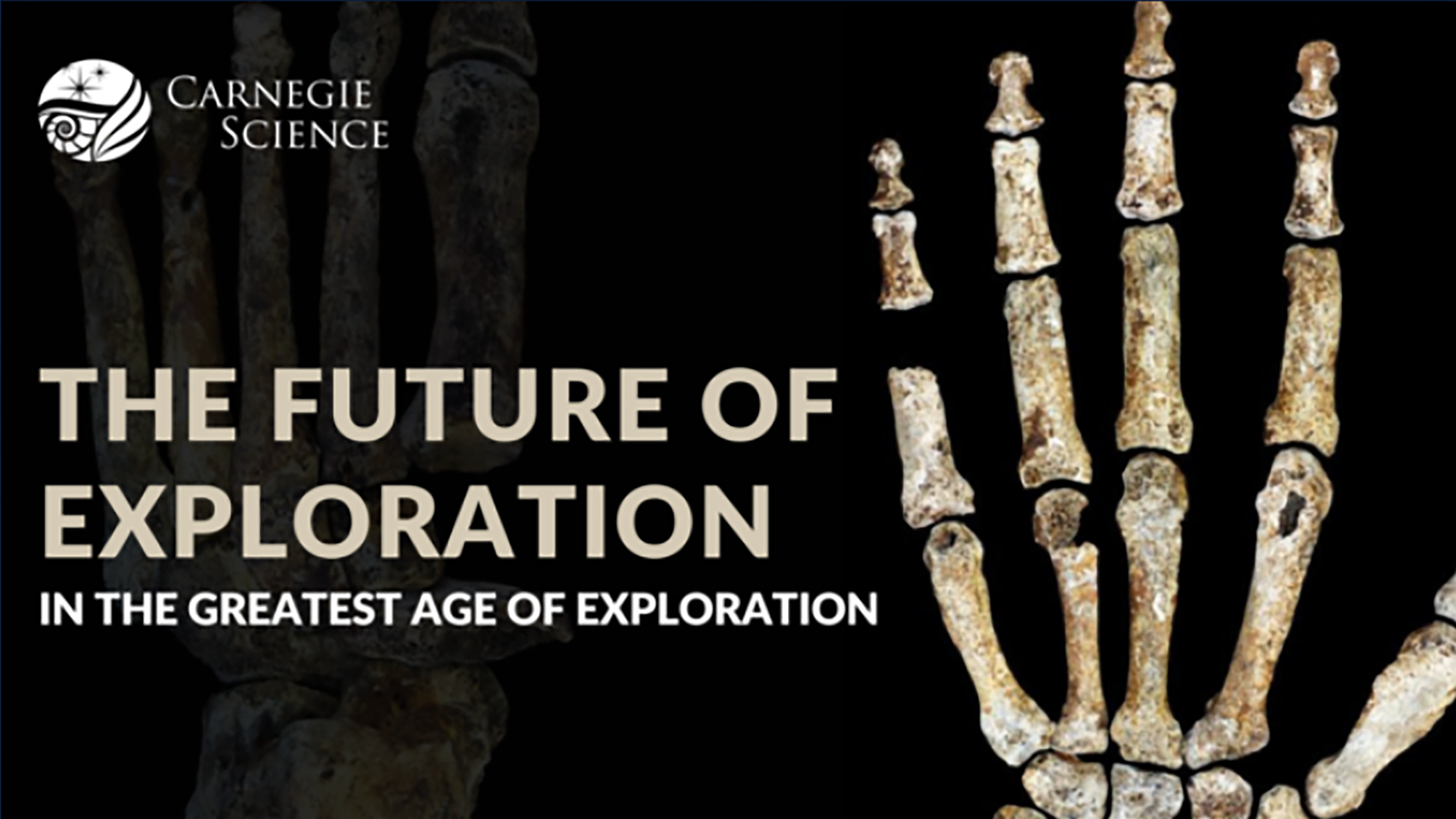
The discovery of Homo naledi in 2013 by teams led by Explorer and Scientist Lee Berger has been hailed as one of the most important scientific discoveries of the 21st Century. Its fossils were found in remote chambers of the Rising Star Cave system just outside of Johannesburg, South Africa, during a remarkable expedition held in 2013 and streamed live to the world. It is the richest find of fossil human relatives on the continent of Africa. The small brain size and bodies of naledi look like human ancestors more than 2 million years old, but it lived at the same time as our own species, Homo sapiens. The fossils of naledi lay deep underground in a seemingly inaccessible dark chamber. The question of how this species could have entered this space, far in the dark zone, has been a continuing mystery. Now the team has found a possible answer: evidence of fire throughout the cave.
The skeletons and other fossils of naledi are in extraordinarily remote locations underground, separated from the surface by tight squeezes. One space is particularly famous for its difficulty. Known as “the Chute”, it is a twelve meter, near vertical route through fissures in the hard dolomitic rock. With squeezes, turns and spaces that narrow to as little as 17 ½ centimetres (about 7 inches), this journey is one that few humans have attempted. All evidence points to this route being the same one that naledi used to access the Dinaledi Chamber and Hill Antechamber, where scientists have uncovered bones of more than 20 ancient naledi individuals of all ages. For today’s team of scientists, the challenge is high. The spaces are so challenging that in places climbers must feel their way, unable even to turn their heads or look down to find their footing.
For nine years, the team operated in these deep spaces with its leader aboveground. Berger has stated many times that he would never be able to enter these spaces. Instead, technology and teamwork enabled cave explorers, archaeologists, and other scientists to explore the deep cave collaboratively. But as the team encountered more stubborn mysteries of naledi, Lee saw that settling some problems might require a personal journey. He lost more than 20 kilograms and increased his physical fitness to the point where an attempt could be made. In an expedition into the Rising Star Cave in August of this year led by Lee Berger and Keneiloe Molopyane, Lee attempted and succeeded in getting through the Chute labyrinth and into the Hill Antechamber and Dinaledi Chamber.
Once in the chambers, Lee immediately began making new discoveries, evidence that had gone unrecognised. One has bearing on one of the most important questions surrounding the mystery of how naledi could move about these remote spaces. As Lee examined the ceiling of these chambers, he realised there was clear evidence of soot from ancient fires. Pristine stalactites and flowstones were growing over more ancient surfaces that were blackened, making a contrast of light and dark that could only have come from smoke at the ceiling of the chambers. This was the first confirmation that fire had been used in the chambers in ancient times, presenting the high likelihood that naledi was responsible.
At this exact moment, Keneiloe and her team were excavating in the neighbouring Dragon’s Back Chamber. The team had never excavated in this space, but it seemed likely to be the last stop on the way to the Chute. Just as Lee was landing from his passage through the Chute, the team in Dragon’s Back uncovered some of the first charcoal and burned fragments of bone, evidence of an ancient hearth. Over the coming days, the team found more evidence of these fires, small fireplaces with burnt bone, and even a fragment of Homo naledi cranium.
These discoveries led the team to re-explore spaces throughout the system. The expedition soon found evidence of fire use throughout the many passages and chambers, even within the most remote recesses of the cave system. Charcoal, ash and burnt bones had gone unnoticed in some chambers, as well as soot blackening on walls and ceilings. As Lee has commented, “We had blinded ourselves by thinking that evidence of fire was not there, but once our eyes were opened, the evidence for fire throughout the system wasn’t difficult to see at all, it was everywhere.”
The team now has abundant evidence of ancient fire use in some of the deepest parts of the Rising Star Cave system, spaces associated directly with Homo naledi. It may take several years of scientific work to fully document the use of fire in the many chambers where it has been identified, including a regime of dating and excavation of new areas. At present, there is no evidence for any species within the cave system in ancient times other than Homo naledi, and no evidence of the use of deep caves by Homo sapiens is known from such ancient times in subequatorial Africa.
Homo naledi was different from humans in many ways. The species had brains around one third the size of living people, and had other features that resembled human ancestors more than two million years in the past. The anatomy of its shoulders and hands is remarkably well suited for climbing, and its bodies were much thinner than those of living people. The species in some ways seems to have been perfectly made for moving through this challenging cave.
The discovery that fire was used throughout the Rising Star Cave system is important. The widespread fire use goes a long way towards explaining how this remarkable, small-brained non-human species journeyed through and used the most remote spaces of the Rising Star Cave system and opens a new period of scientific enquiry into their way of life and complex behaviour. It also speaks to the behavioural capacity and intelligence of this ancient human relative.
Lee will announce the discovery during the Carnegie Public Lecture on December 1st 2022 beginning at 18:30. The lecture is open to the public, who may register at The Future of Exploration in the greatest age of exploration | Carnegie Institution for Science (carnegiescience.edu).
The lecture will be livestreamed by following the link available at https://livestream.com/carnegiescience/explorationage
→ Homo naledi, a new species of the genus Homo from the Dinaledi Chamber, South Africa elifesciences.org
→ NOVA Science Documentary - Dawn of Humanity https://youtu.be/RzLJAa5X4Fo
→ Almost Human: The Astonishing Tale of Homo naledi and the Discovery That Changed Our Human Story by Lee Berger Goodreads
